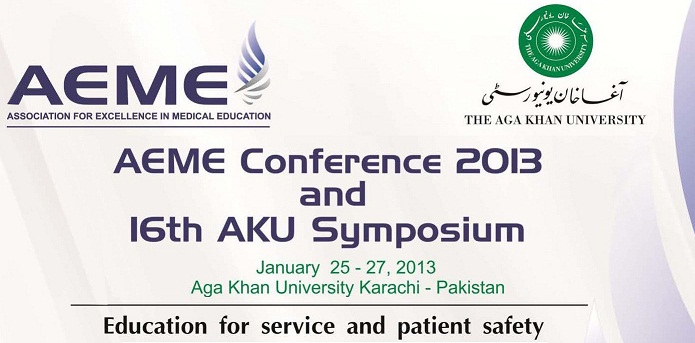Day 2 : Oral Presentations (Theme: Curriculum - Teaching & Learning)
Surgical Grand Rounds at a university hospital: creating researchers out of surgical training programs
Location
Lecture Hall 3
Start Date
27-1-2013 9:00 AM
Abstract
Objective: To evaluate the outcome of Surgical Grand Round (SGR) presentation at a University Hospital; in terms of national, international presentations and publications.
Introduction: Grand rounds are an important educational activity in all teaching hospitals however each institute has its own way of conducting them. At our institute, grand rounds in the Department of Surgery include an original research presentation by the residents with a faculty supervisor. The publication of the research work acts as a measure of its success. In this study we analyzed the outcome of this activity and review the factors affecting the publication.
Methodology: It is a retrospective review of prospectively maintained data of all presentations made at the Surgical Grand Round at a University Hospital during January 2001 and December 2010. Presentations with incomplete follow up records were excluded from analysis. A Publication-Presentation Index (PPI) was used to evaluate outcomes of SGRs and to study factors influencing outcomes and differences in PPI in each category were calculated using the chi square test.
Results: Total of 470 presentations were made. Majority presented retrospective studies (73%). Majority of the presentations were made by junior residents (year 1-3, 62%). Following presentation, 279 (59.4%) studies were presented at a national conference, 80 (17%) were presented at an international forum while only 99 (21.1%) studies were published. Mean presentation to publication time was 34.8 months. Study design, level of resident, section of surgery, sample size and national/international presentation were associated with conversion to a publication (all p <0.05). Overall PPI was 0.32. Randomized controlled trials had the highest PPI (0.67).
Conclusion: The PPI has a potential to be used as a tool to study the association of presentation to publication. This model of Surgical grand rounds can be used to enhance research among residents and to create a researcher’s mind from a surgical training program.
Surgical Grand Rounds at a university hospital: creating researchers out of surgical training programs
Lecture Hall 3
Objective: To evaluate the outcome of Surgical Grand Round (SGR) presentation at a University Hospital; in terms of national, international presentations and publications.
Introduction: Grand rounds are an important educational activity in all teaching hospitals however each institute has its own way of conducting them. At our institute, grand rounds in the Department of Surgery include an original research presentation by the residents with a faculty supervisor. The publication of the research work acts as a measure of its success. In this study we analyzed the outcome of this activity and review the factors affecting the publication.
Methodology: It is a retrospective review of prospectively maintained data of all presentations made at the Surgical Grand Round at a University Hospital during January 2001 and December 2010. Presentations with incomplete follow up records were excluded from analysis. A Publication-Presentation Index (PPI) was used to evaluate outcomes of SGRs and to study factors influencing outcomes and differences in PPI in each category were calculated using the chi square test.
Results: Total of 470 presentations were made. Majority presented retrospective studies (73%). Majority of the presentations were made by junior residents (year 1-3, 62%). Following presentation, 279 (59.4%) studies were presented at a national conference, 80 (17%) were presented at an international forum while only 99 (21.1%) studies were published. Mean presentation to publication time was 34.8 months. Study design, level of resident, section of surgery, sample size and national/international presentation were associated with conversion to a publication (all p <0.05). Overall PPI was 0.32. Randomized controlled trials had the highest PPI (0.67).
Conclusion: The PPI has a potential to be used as a tool to study the association of presentation to publication. This model of Surgical grand rounds can be used to enhance research among residents and to create a researcher’s mind from a surgical training program.

